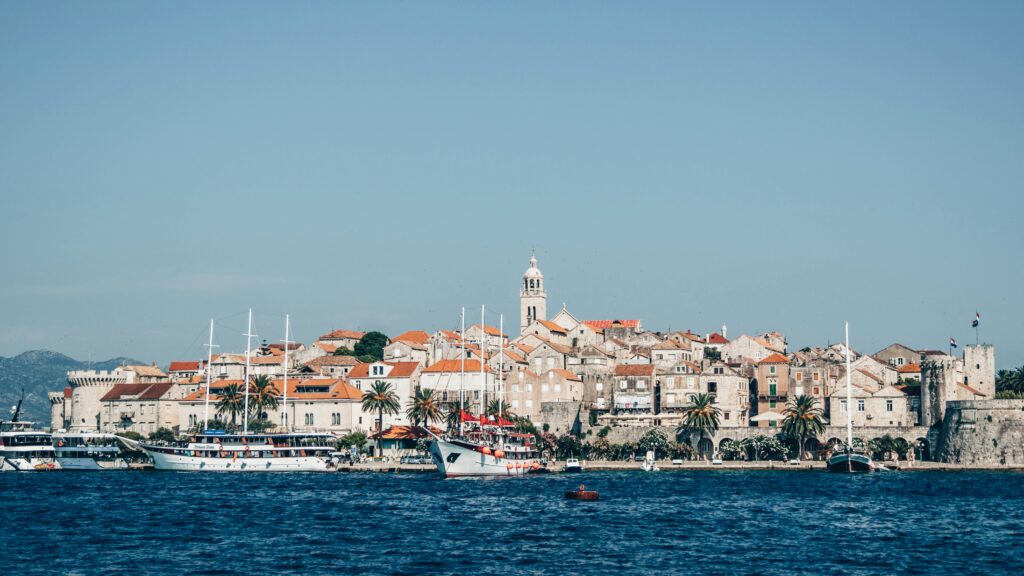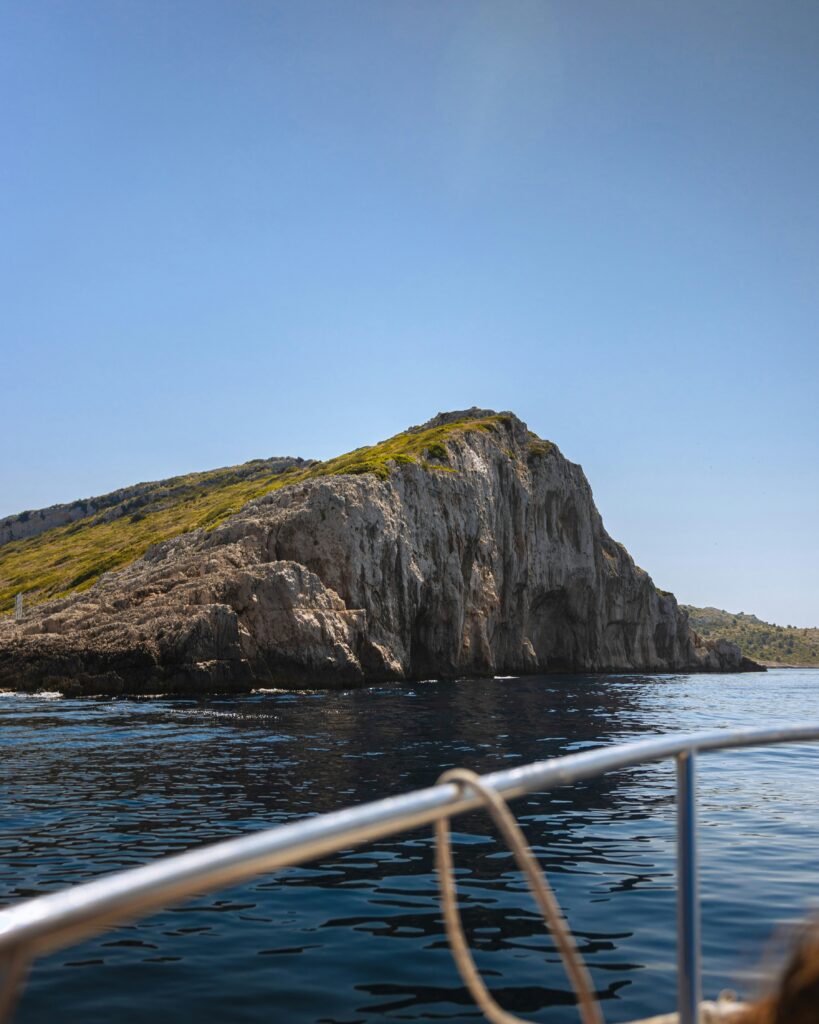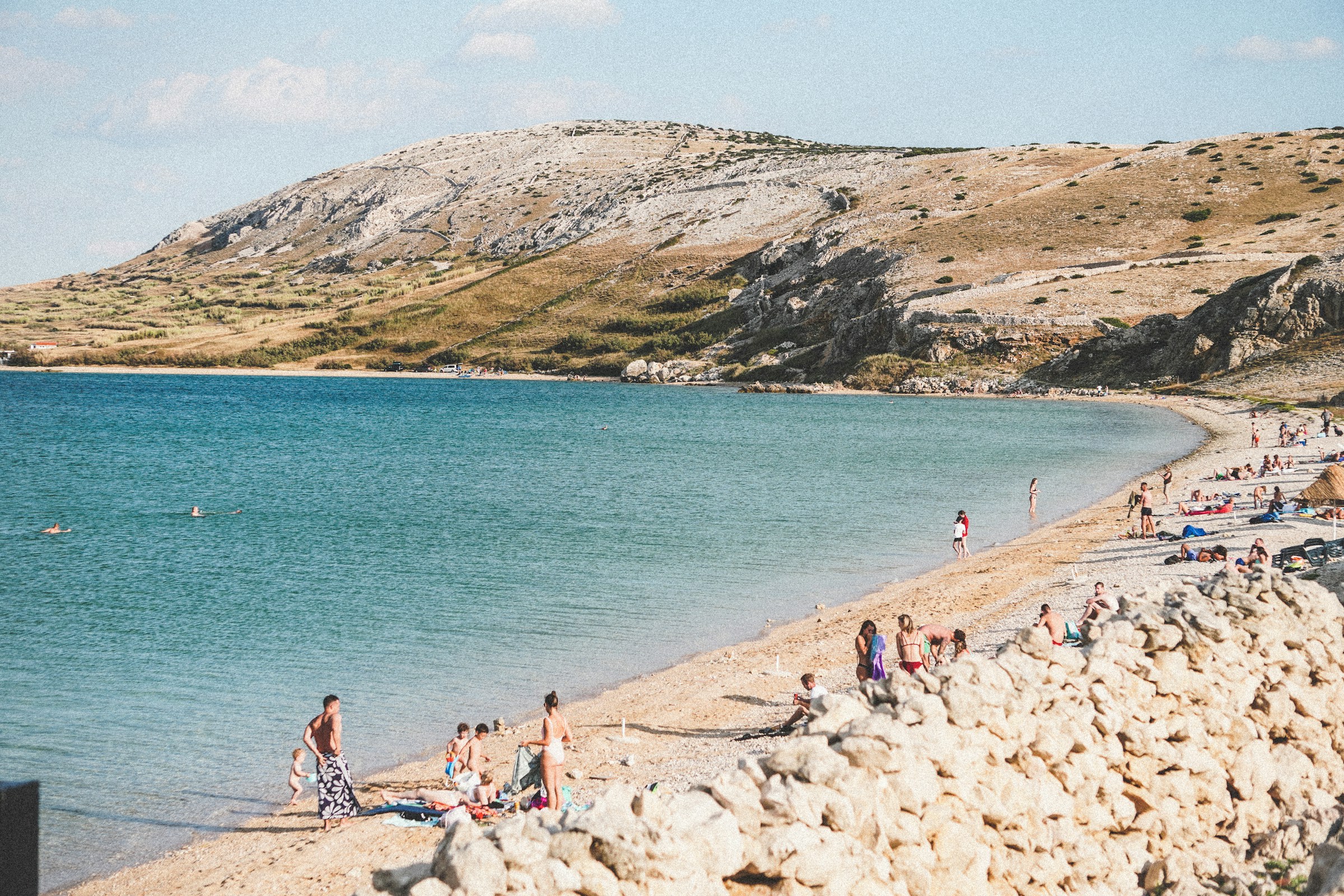Croatia isn’t just famous for its Adriatic coastline – it’s also home to a deeply rooted wine culture. Some of Europe’s oldest grape varieties are still thriving here, especially in the coastal regions near Šibenik.
If you’re staying nearby, you’re perfectly placed to explore native grapes like Babić, Plavac Mali, and Pošip, and to experience the vineyards and wine culture that define the region. From bold reds to crisp whites, these indigenous varieties offer a true taste of Croatia’s terroir.
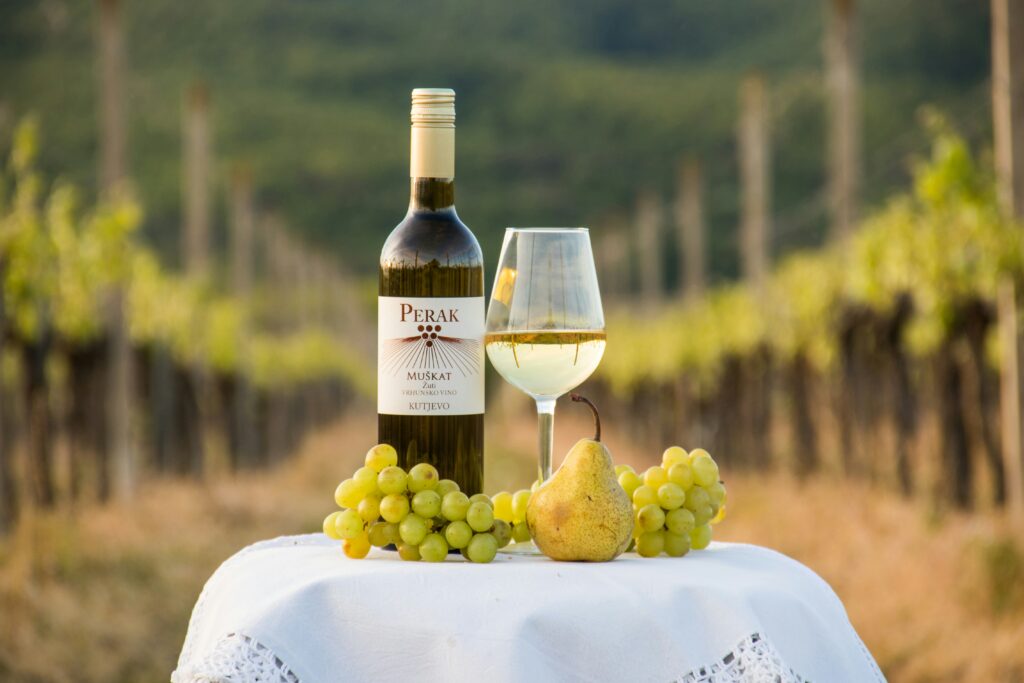
Babić: Šibenik’s Signature Red
Grown in the rocky coastal hills near Primošten, Babić is a powerful red grape known for its rich flavor, earthy notes, and excellent aging potential. Its vines grow in dramatic stone terraces, creating a rugged landscape that’s just as impressive as the wine itself.

Where to try Babić near Šibenik:
- Testament Winery – Sleek tasting room and award-winning bottles just outside town
- Rak Winery – Family-run and full of charm, offering warm hospitality and guided tastings
- Primošten Vineyards (Bucavac) – A historic, UNESCO-nominated area with dramatic views and deeply traditional wine methods
Getting there:
Most vineyards are 20-40 minutes by car from Šibenik or Pirovac. Taxis or wine tour companies can help if you’re not driving.
Plavac Mali: Bold, Southern, and Closely Related to Zinfandel
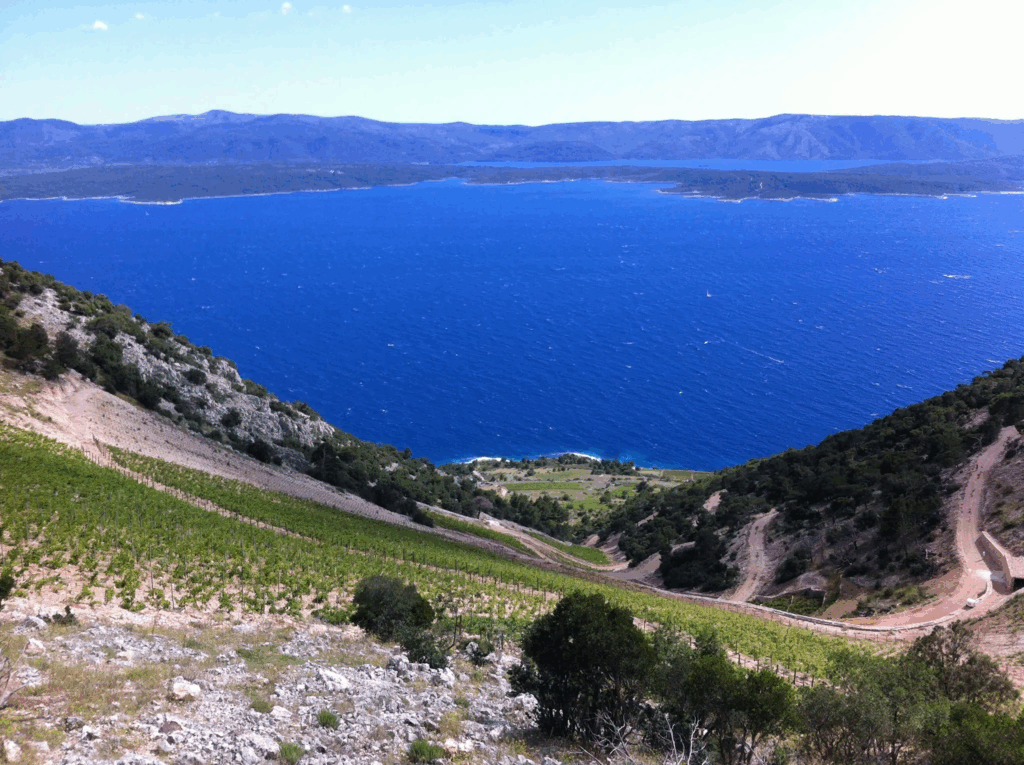
Further south, Plavac Mali dominates Croatia’s red wine scene. This bold red grape brings deep notes of blackberry, plum, and spice – perfect with hearty Dalmatian dishes.

Fun fact for wine lovers: Plavac Mali is actually a genetic descendant of Crljenak Kaštelanski (also called Tribidrag), which is the original Zinfandel – the same grape that took root in California and became a staple in wines like White Zinfandel. So when you sip a glass of California Zinfandel, you’re tasting a piece of Croatian heritage.
Where to try it: While Plavac Mali grows further south, many wine bars and tastings near Šibenik include excellent bottles from Pelješac, Dingač, and Hvar Island.
More Grapes Worth a Sip
You’ll also discover local whites that round out the tasting experience:
- Pošip – Originally from Korčula, now popular along the entire coast, with citrusy freshness and structure
- Debit – A Dalmatian classic – dry, slightly salty, and great with seafood
- Maraština – Light, balanced, and often served in traditional seaside konobas
Where to Taste Wines Near Šibenik
If you’re based in Pirovac or Šibenik, here are a few vineyards to add to your list:
- Baraka Winery (Jadrtovac) – Organic wines and stunning vineyard views near the sea
- Bibich Winery (Skradin) – Famous for creative tastings and local pairings
- Sladić Family Wines (Plastovo) – Fourth-generation winemakers with strong ties to indigenous grapes
Tip: Always book ahead – tastings are usually by appointment, especially in summer.
What to Bring for Wine Tasting
- A reusable water bottle (stay hydrated)
- Sunscreen and a hat – many vineyards offer outdoor tastings
- A light jacket for cellars
- Comfortable walking shoes
- Extra room in your suitcase – you’ll want to take a bottle or two home
Stay at Villa Lava: Your Wine Country Base
Planning wine tastings and vineyard visits? Stay where you’re just minutes from it all. Villa Lava in Pirovac offers the perfect mix of comfort, style, and coastal calm – with top wineries, boat tours, and beaches nearby.
After a day of sipping reds and whites in the Dalmatian sun, come back to your peaceful terrace, pour a glass of local Babić, and watch the sun dip over the Adriatic.
Book your stay at Villa Lava Croatia and make your wine getaway as relaxing as it is unforgettable.
